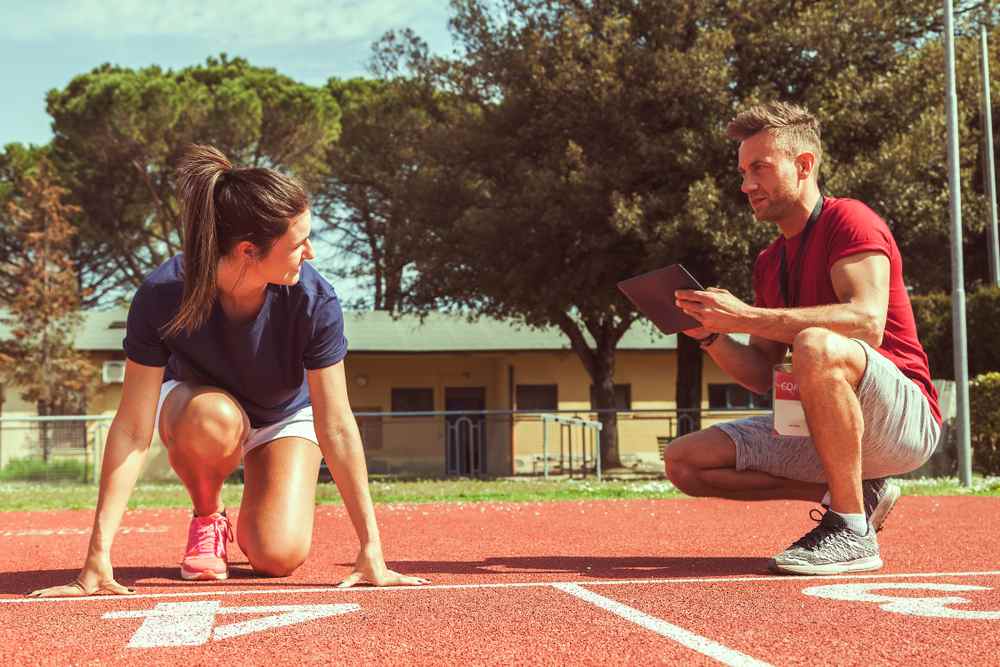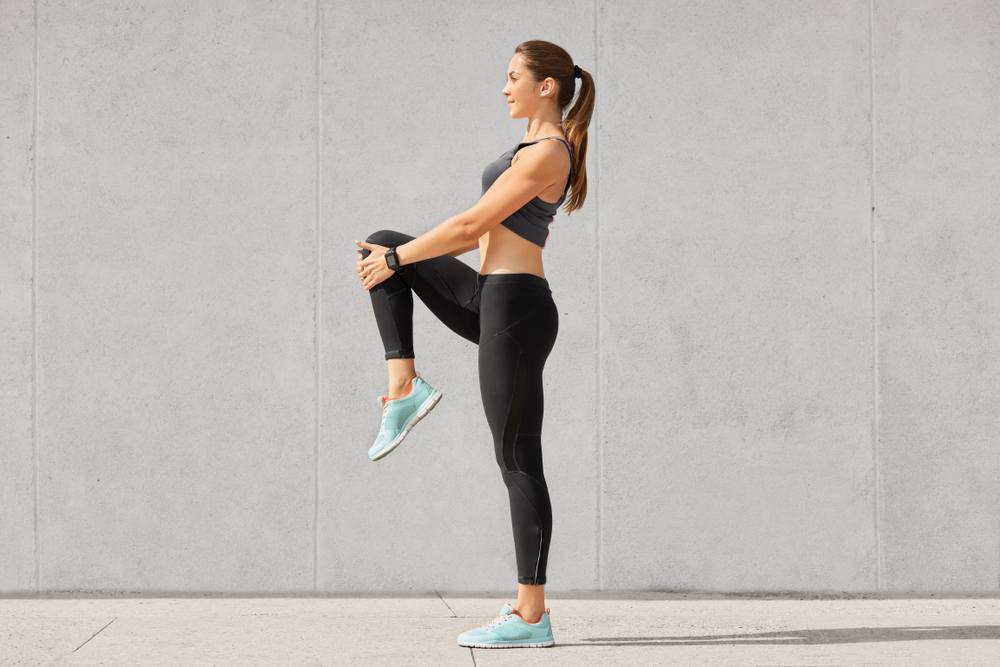 As summer blazes on, young athletes are training through the heat. School is out, and most teenage athletes are beginning to prepare for the start of the fall sports season, the start of a new school term, or even competing on year-round teams. Either way, working out responsibly during the summer months will help young athletes improve performance and prevent injury.
As summer blazes on, young athletes are training through the heat. School is out, and most teenage athletes are beginning to prepare for the start of the fall sports season, the start of a new school term, or even competing on year-round teams. Either way, working out responsibly during the summer months will help young athletes improve performance and prevent injury.
Taking Care of Growing Athletes
Unlike adults, children and teenagers are still growing. All of a teen’s anatomy, bones, joints, ligaments, etc., are still forming and growing. Consequently, young athletes are more susceptible to growth plate fractures. Growth plates are areas of bone growth, typically at the end of long bones that new bone grows from as a person ages to maturity. A fracture to a growth plate can interrupt the normal growth process and potentially hinder future athletic endeavors. Preventing injury is one of many reasons to follow our 7 Top Tips for Summer Training below.
Mental fatigue from too much training can also affect a young athlete, so it’s important to ensure their summer includes fun and still plan hangouts with their friends. Balance is an important part of both mental and physical health.
Top 7 Tips for Young Athletes During Summer Training
Establish a Routine
It is essential to stick with a regular schedule during summer training to keep your mind, muscles, and joints in tip-top shape.
We know it’s summer, and teens want to lounge around with friends, but sticking with a workout routine gives structure to your days, and consistency allows you to notice habits, weaknesses, and strengths in your body. When you notice these aspects, make a note to help tailor your workouts to improve problem areas throughout the summer.
A study published in Sports Health reports young athletes who train more than eight months (year-round) out of the year are at a lower risk for acute injury than young athletes who train solely during the school year. This information can help young athletes, coaches, and trainers establish a rhythm of training throughout the school year and summer months.
Always Warm Up And Cool Down
 Athletic training in the summer does not mean you can skip over important steps for a safe workout. Always warm up before starting a workout, ideally 5-10 minutes of low-intensity cardiovascular exercise. This type of warm-up gradually kickstarts your cardio system by pumping blood into muscles and joints. This process can help prevent muscle soreness and lessens the risk of injury.
Athletic training in the summer does not mean you can skip over important steps for a safe workout. Always warm up before starting a workout, ideally 5-10 minutes of low-intensity cardiovascular exercise. This type of warm-up gradually kickstarts your cardio system by pumping blood into muscles and joints. This process can help prevent muscle soreness and lessens the risk of injury.
Depending on the sport you are competing in, it is also helpful to stretch thoroughly before you begin a workout session. Stretching is a great activity to include in a warm-up as stretching your muscles increases the flow of blood and oxygen, again lowering your risk of injury and soreness.
A cool-down is the opposite of a warm-up but is equally important. It reverses the process of a warm-up by slowing your heart rate to regulate blood flow and lowering core body temperature to bring your body back to homeostasis without cramping that could occur otherwise. Stretching as part of a cool-down helps release any stiffness you may have after working out.
Vary Your Routine
To not overwork one area of your body, you want to change up your workout throughout the week and summer. For example, use different modalities- weights, aerobic, or anaerobic. Being a well-rounded athlete can only strengthen your skills on the field and off.
A study published in the Journal of Orthopedic and Sports Physical Therapy reveals that athletes who are monitored by a coach or trainer have fewer injuries. Your coach can make sure you are working out safely and promote optimal conditioning. Your coaches can modify your routine to accommodate an existing injury and prevent another.
If you have a chronic injury from overuse, you might benefit from adding physical therapy to your workout routine. AICA Orthopedics can help you create a physical therapy program to keep you strong and help prevent future injuries.
Make Time to Rest
Don’t neglect rest days when establishing your summer training routine. Rest days are essential to allow the body to recover and reduce mental fatigue. Make sure you are making time for your friends. Summer training can be time-consuming and frustrating, but is all about balance.
Avoid multiple days in a row of high-intensity workouts. Instead, remember tip number 3 and vary your workouts. This allows different areas of your body to recover and build the appropriate new muscle mass because, regardless of your routine, exercise causes micro-injuries to tissues. Rest days allow the body to repair those injuries – usually, fibroblasts, which are cells that repair muscle proteins.
Resting between workouts is also important. It allows you to take stock of how your body is feeling as you go through your workout routine. This is especially important during the summer, when the heat can speed up fatigue and dehydration.
Look to Your Favorite Athlete
While you won’t go from where you are to pro athlete level in one summer, look to athletes you admire. See if they post their workout online. If they are particularly open with their routines and diet, you could incorporate some of these habits into your own life. Each idea forms a great foundation from which to grow. Discuss any potential changes with both your coach and doctor to ensure they are appropriate for a young athlete.
Stay Well Hydrated
Increasing your fluid intake while working out is already vital to staying healthy while building strength and flexibility. However, during the summer months, this is even more imperative. The heat of summer weather increases how much you sweat. This, in turn, means you are losing more fluid than in non-summer months.
Lack of hydration can lead to vomiting, lightheadedness, passing out, and other injuries. Young athletes should drink water consistently, not just during practice or training. The American Council on Exercise recommends drinking approximately 20oz of water 2-3 hours before exercise in addition to staying hydrated during exercise.
Use Common Sense
Our last tip is to listen to your body! Only you know what your body is feeling while training. If you feel overworked or have muscles that are sore non-stop, make sure you stop and reach out to the adults around you. They can help get you scheduled to see one of our sports medicine doctors at AICA Orthopedics in Conyers.
Don’t get too wrapped up in training and forget to take care of yourself. You can’t continue to succeed and stay safe and healthy if you forget to check in with your own body. Maintain hydration levels and pace yourself when trying new or advanced workout techniques. Take breaks when you need to and listen to those around you.
Summer Training Risks
 Heat is the biggest danger when participating in summer training. Unlike an acute injury, a year-round danger, heat can be an unexpected danger that creeps up on you.
Heat is the biggest danger when participating in summer training. Unlike an acute injury, a year-round danger, heat can be an unexpected danger that creeps up on you.
Similar to warming up before a workout, you should approach working out in the heat the same way. Slowly increase your time outside over 10-14 days before you complete a full workout in the summer heat.
As we mentioned above, it is important to rest between workouts and training days. Often you won’t feel how overheated you are until it is too late. Take regular breaks from training to get in the shade or even inside if you can. If you don’t take the time to cool off before, during, and after, you can suffer from heat stroke (symptoms can include confusion, vomiting, dizziness, and high body temperature) or other heat-related illnesses.
Any of these symptoms are an emergency, and 911 should be called as soon as possible.
An Acute Injury can derail your season’s plans and possibly your future ability to participate in sports. If you suspect an injury, you will need to be evaluated, and appropriate imaging should be taken. An MRI (magnetic resonance imaging) is the best modality to view and diagnose injuries to soft tissue, tendons, and ligaments. If a skeletal injury is suspected, an x-ray may be performed as well.
Chronic injuries usually caused by overuse can often be managed with a physical therapy regime to improve strength and flexibility, as well as ease pain. AICA offers these services as well as comprehensive pain management.
Call AICA Conyers for Treatment of Sports Injuries
Even the best-laid plans can go awry. If you think you’ve sustained an injury during your summer training, please reach out to us at AICA Conyers. We are staffed 24/7 to have you evaluated by our expert orthopedic sports medicine doctors. The AICA sports injury team will come together to create a collaborative treatment plan for you. A well-rounded approach to healing, just like training to build skill and strength in your chosen sport, is the best way to achieve an optimal outcome in your healing journey. After evaluation, we are equipped to diagnose and treat any acute or chronic injuries to get you back to playing the sports you love in prime condition.
